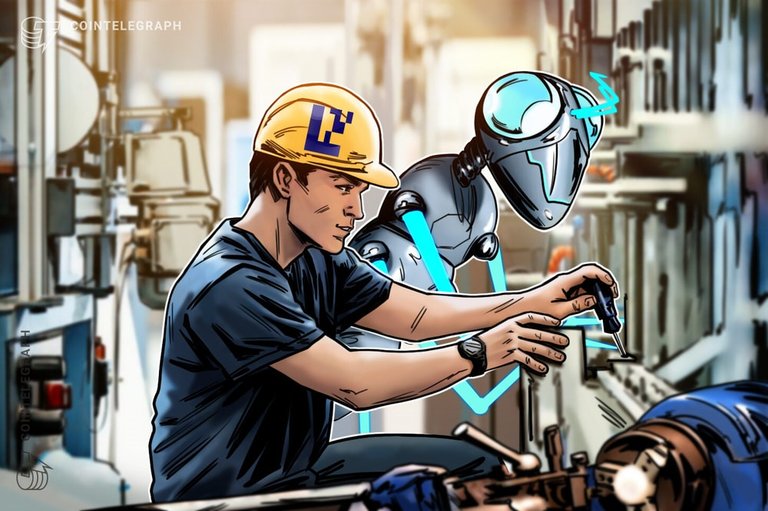First Impression EP1: Eigen Layer | Liquidity Centralization

Smells like a monopoly, feels like a monopoly, is it a monopoly?
I've been meaning to start a series where I talk about every crypto project I research(mostly stumble on), with a focus on how or what I feel about them at first glance.
Eigen Layer has the honor of being the first project I'd be talking about. The title clearly gives off that I have a negative sentiment towards the project, but it's more of a “concern” rather than a firm opinion, so DYOR.
Restake To Centralize Liquidity
Or am I just being paranoid?
The first time I heard of something similar to restaking was Lido’s liquid staking service on Ethereum. I believe I have already written something about this but might still do a first impression post in future.
That said, I never had an extensive interest in liquid staking because unlike everyone else who promoted this as some new technological breakthrough, I could see past the bullshit as what Lido calls “liquid staking” - fancy name by the way - has always existed in DeFi, it simply didn't exist for a PoS blockchain in the way Lido designed it.
So where?
WBTC.
WBTC or Wrapped Bitcoin is a ERC-20 token that represents Bitcoin on Ethereum. Sure, they are largely different in terms of design, but both WBTC and Lido’s liquid staking assets are derivatives.
Do you want bitcoin on Ethereum? You deposit your BTC into an address(contract) that mints you a WBTC as it holds your BTC.
The difference between what WBTC is and what Lido’s staking assets are is that with Lido, the asset committed to get the derivative still earns you yield.
So you still secure Ethereum, earn yield from that and still be able to use your staked ETH in the secondary DeFi market via the derivative - stETH.
Don't get me wrong, Lido protocol enables a segment of the ETH supply to be able to enter the governance of Ethereum. So far, about 9.84 million ETH is staked on Lido, accounting for approximately 8.15% of ETH’s supply.
That's significant.
This essentially means that over $24 billion in value now additionally secures Ethereum whilst still providing liquidity to the broader DeFi ecosystem.
How does any of this relate to retaking on Eigen Layer?
Frankly speaking, the names were just so similar. But that's not all, both services involve offering a means for ETH to be reused extensively, so much so that it feels like a monopoly.
Get This
EigenLayer allows Ethereum stakers - - who have staked ETH in Ethereum's Proof-of-Stake network - to "restake" their staked assets and use them to provide security or validation for other networks or decentralized applications (dApps) without having to unstake them from Ethereum.
What's the surface solution here?
Well, think about just about anything one would want to launch on the digital space. Traditionally, parties involved would have to self-host and handle a lot of technical stuff before even getting to building and growing the product itself.
Like Netflix on AWS(yes, this is a popular reference not only I point out), without AWS, Netflix would have to spend a significant sum on infrastructure.
Similar to this, blockchains have to develop their own validator set and we all are aware of what that means. Figuring out initial supply, incentives and anti-abuse layers is complex, so why burden new blockchains or projects with that when they could just plug in via the Eigen Layer and have signed validators on Ethereum secure their network?
What could go wrong?
Similar to Lido, it is a great solution, not every project will want to have to deal with governance of its own network, oh wait… That is exactly the problem!
Why build a network only to hand off governance to Ethereum validators?
Why throw away potential liquidity to ETH?
What people don't understand is that new networks on Ethereum steals liquidity from ETH.
ETH is vastly undervalued and should have been worth at least $10,000 right now!
But all this value is branching out. With Eigen Layer, this value can be concentrated back to Ethereum, with literally all moving values paying taxes(fees) to Ethereum validators.
This is centralization if the vast Ethereum ecosystem opts for it. It's no different from Bitcoin maxis wanting everything to be about bitcoin because it is the “most secured chain.”
Recently, there's been some mismanagement of Eigen Layer’s token supply just a day after launch. I don't want to go into that in this post, this is first impression after all and what I take from what Eigen Layer has built is that ETH is bound to become a dominating force and will be very attractive to institutions, afterall, it's scaling to a state of total monopoly.
Have you heard or read about Eigen Layer? What was your first impression?
Disclaimer: as a first impression, my opinions can change overtime, if significant data surfaces to counter what was weighted when creating this content.